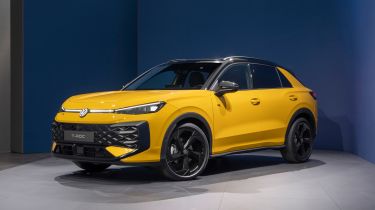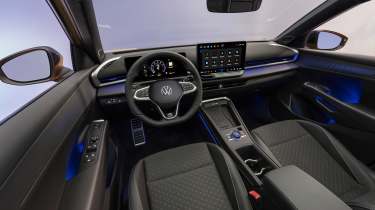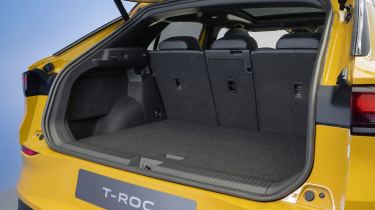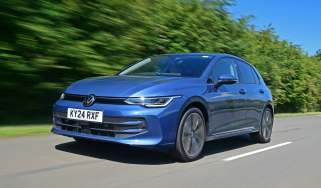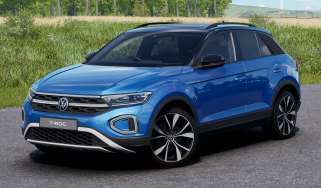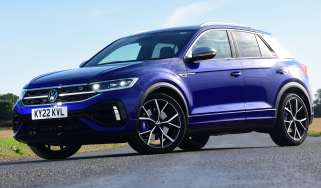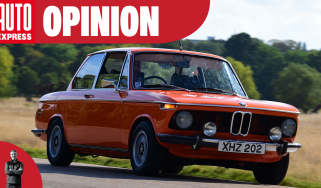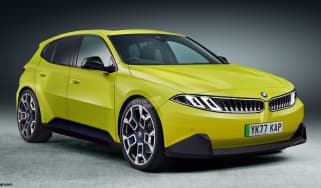All-new Volkswagen T-Roc gets hybrid power and a treasure trove of tech
We’ve had a close look at the second generation of VW’s big-selling small SUV, which breaks new ground for the brand
Having sold more than two million units, the Volkswagen T-Roc has become such an important part of Volkswagen’s model range that you’d be forgiven for thinking there had been more than one generation of the small SUV. But now, eight years after its debut, we finally have a second generation – and it’s set to be a significant car for the brand in more ways than one.
Presales of the new T-Roc are open now, with first deliveries expected before the end of the year. Pricing hasn’t been announced, but we suspect a mild increase over the current car, which starts at just under £30,000 in entry-level Life guise or around £45,000 for the hot R model.
Buyers who don’t want to wait can get a good deal on the first generation T-Roc via our Buy A Car service. Dealers have finance deals starting from £260 per month and new cars in stock from under £27,000.
How big is the new T-Roc?
VW’s SUV will compete against familiar rivals, with the Toyota C-HR, MINI Countryman and an array of hatchbacks providing stern opposition. Still positioned between the T-Cross and the Tiguan (both recently renewed), the new T-Roc now sits a little closer to the latter having grown 122mm in length to 4,373mm, with an additional 28mm in the wheelbase.
The new car is also both 9mm wider and taller than before, although VW is keen to point out that this has not come at the expense of aerodynamics; with a drag coefficient of 0.29, it’s 10 per cent slipperier than before.
What engine options will be available?
While VW has made the T-Roc more efficient at cutting through the air, more significant work has been done underneath, because this will be the first car from the brand to feature a full-hybrid set-up. This milestone has been long delayed, due to uncertainty over whether legislation might force hybrids to be phased out. The new tech won’t be offered on T-Roc models this year, though, with the full-hybrid versions set to go on sale by summer 2026.
Alongside several mild-hybrid options, two full-hybrid set-ups will be available, one with 134bhp and the other with 167bhp – although both operate in the same way. There’s a 1.5-litre four-cylinder petrol engine (which first arrived on VW Group cars in 2022), mated to a hybrid module that will enable pure-electric driving “in urban traffic” thanks to a separate electric motor. There’s no specific ‘EV mode’ in the T-Roc, although we’ve been told by VW that there’s no speed limit to the electric motor. It will also come only with a seven-speed DSG automatic gearbox, with power going to the front wheels.
The overall specifications of the full-hybrid units haven’t been revealed yet, but with electric input we expect it to be more frugal than the outgoing 1.5-litre TSI T-Roc, which served up 46.8mpg with an automatic box. VW claims an improvement of 15 per cent in efficiency for the new full-hybrid over an equivalent mild-hybrid, with CO2 emissions sitting around the 100g/km mark.
The new T-Roc will come with its mild-hybrid options from launch, while a 2.0-litre mild-hybrid with all-wheel drive will arrive in 2026, and a range-topping T-Roc R is set to return at a later date. The mild-hybrid versions available at launch will come with a 1.5-litre eTSI four-cylinder petrol engine with 114bhp or 148bhp, again with a seven-speed automatic gearbox and front-wheel drive.
The 148bhp mild-hybrid has already been put into use by the facelifted Golf, which uses the same MQB evo platform as the T-Roc. Unlike the Golf, we’ve been told there’s no plug-in hybrid version of the T-Roc in the works.
The T-Roc also gains the Dynamic Chassis Control (DCC) system seen in the Tiguan, Passat and Tayron and it’ll be offered on all versions aside from the base Life. The selection of driving modes (Eco, Comfort, Sport and Individual) will tailor the adaptive suspension set-up, although as we’ve seen in other VWs with DCC it is also possible to manually opt for one of 15 separate damping settings. There are also different modes to tweak steering weight, the engine’s response and the distance control of the adaptive cruise.
What’s new with the T-Roc’s design?
While it’s bigger than the old car, VW says the new model remains “distinctively T-Roc”. What that means is that the new model has retained plenty of design details from the outgoing version, with a similar silver ‘hockey stick’ stripe stretching from A-pillar to D-pillar, a sharp crease above the rear wheelarch and the relatively rakish proportions not differing too greatly.
The front end of the T-Roc clearly takes inspiration from both the new Tiguan and Tayron SUVs, but also elements of EVs such as the ID.7. This “stylistic relationship” – as VW refers to it – is underscored by IQ.Light matrix LED lights flowing into an illuminated badge.
The R-Line models come with a bespoke bodykit as before, with a more aggressive front grille, larger 20-inch alloy wheels and a gloss black faux diffuser on the rear – where you’ll find another full-width light bar and illuminated VW badge.
How has the interior technology improved?
Step inside the new T-Roc, and you’ll find a cabin that’s been heavily influenced by the latest Passat and Tiguan. On the dash, there’s a 10.2-inch touchscreen on lower models, with higher-spec versions like the R-Line benefiting from a 12.9-inch unit instead.
Both use the latest, fourth-generation MIB4 infotainment from VW, although the touch-sensitive slider for volume and climate remains at the bottom (there’s another climate menu on the bottom of the screen, too). VW’s ChatGPT-based IDA voice assistance is included, but we’ve had mixed results using this system in other cars.
In front of the driver there’s a new 10-inch ‘Digital Cockpit’ – the same as you’ll find in the current Golf. It’s a user-friendly, configurable screen which, during a special preview event of the T-Roc, we found easy to use. It also works well with the car’s physical steering wheel controls – which VW is currently moving back to after its unpopular dalliance with touch-sensitive buttons.
The new car also marks the first time a head-up display has been offered in a T-Roc. Displaying information like road signs, speed and navigation, it’s another system we’ve tried in other VWs, and one we’ve found that works well.
There’s not much in the way of physical controls in the T-Roc, but behind the wireless smartphone charging tray and next to the starter button on the centre console you’ll notice a rotary dial. VW calls it a ‘driving experience control’ that switches between audio and also drive modes and ‘atmospheres’, the latter changing elements such as ambient lighting.
When we got the chance to have a look around the T-Roc’s new cabin, we found it to be pretty well screwed together with a bright and airy feel overall, complete with lots of soft-touch plastics and backlit perforated leatherette materials on the doors. The Style version also gets 14-way adjustable seats with various massage functions – the first time the technology has been offered in the T-Roc. We’re not too sure about the new interior door handles, though, which are a slightly clumsy, lever-style design.
We had no issues with the T-Roc’s interior space, however. That wheelbase extension has freed up some extra legroom in the back and four tall adults should have no issue getting comfortable. The boot has also grown, with the 465-litre capacity representing a 20-litre improvement over the outgoing car.
Despite being one of the smaller SUVs that VW makes, the T-Roc benefits from the firm’s latest suite of safety systems. Standard kit includes automated braking and steering assist, driver attention monitoring, parking sensors front and rear, cruise control, lane keep assist and road sign display.
Optional safety features include adaptive cruise control, a rear-view camera, park assist and VW’s recently improved Travel Assist system, which can predict upcoming road obstacles like corners, roundabouts and junctions, with lane keep assist and adaptive cruise keeping the car in an optimal position.
Wheels for your loved ones! Take a look at the best family cars...
Find a car with the experts

